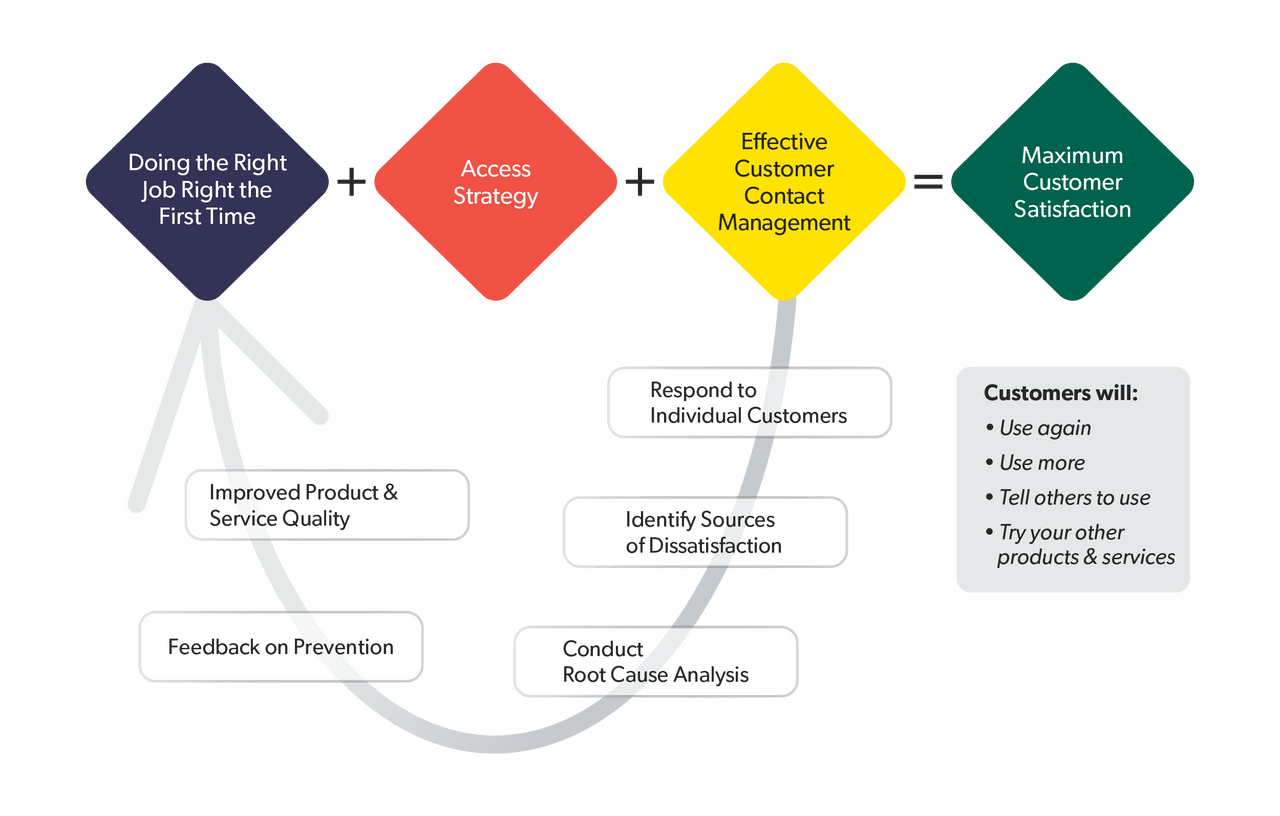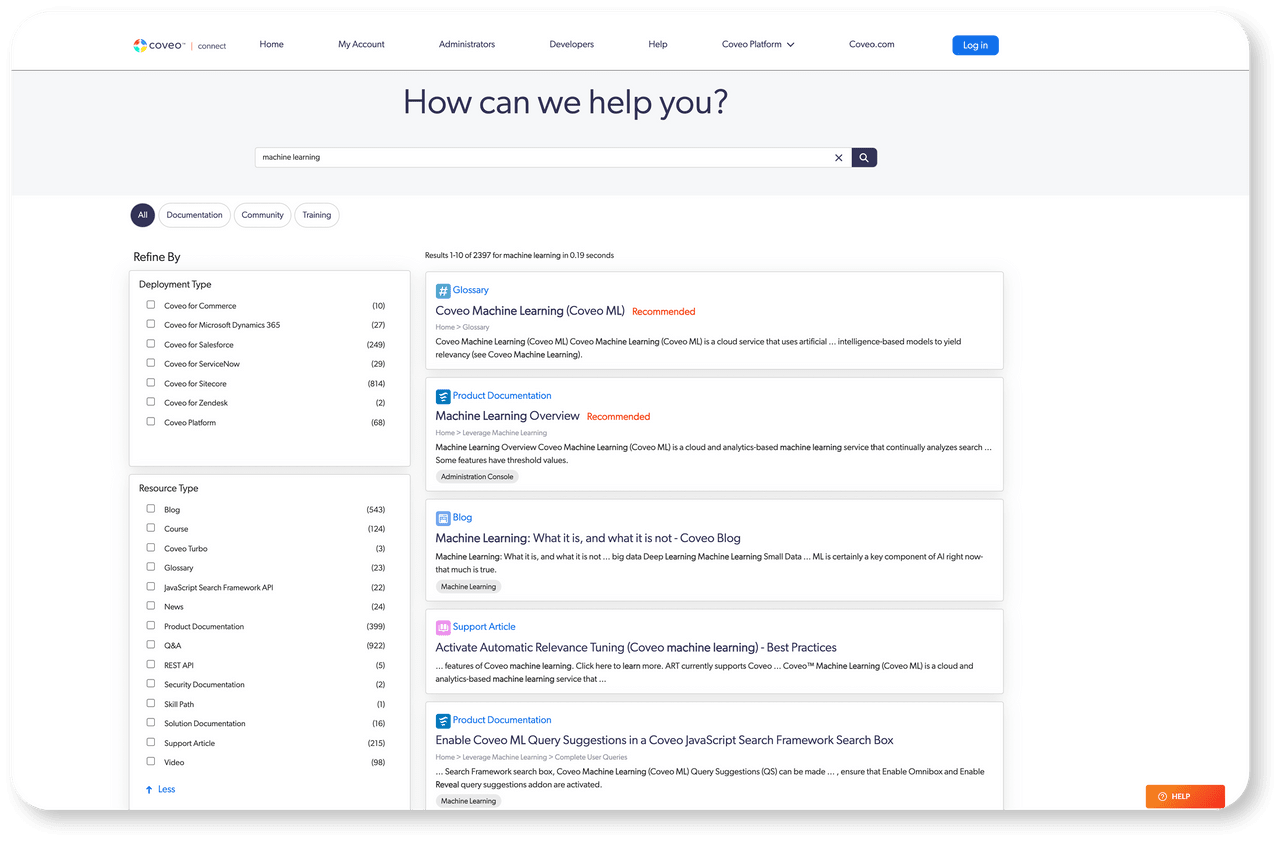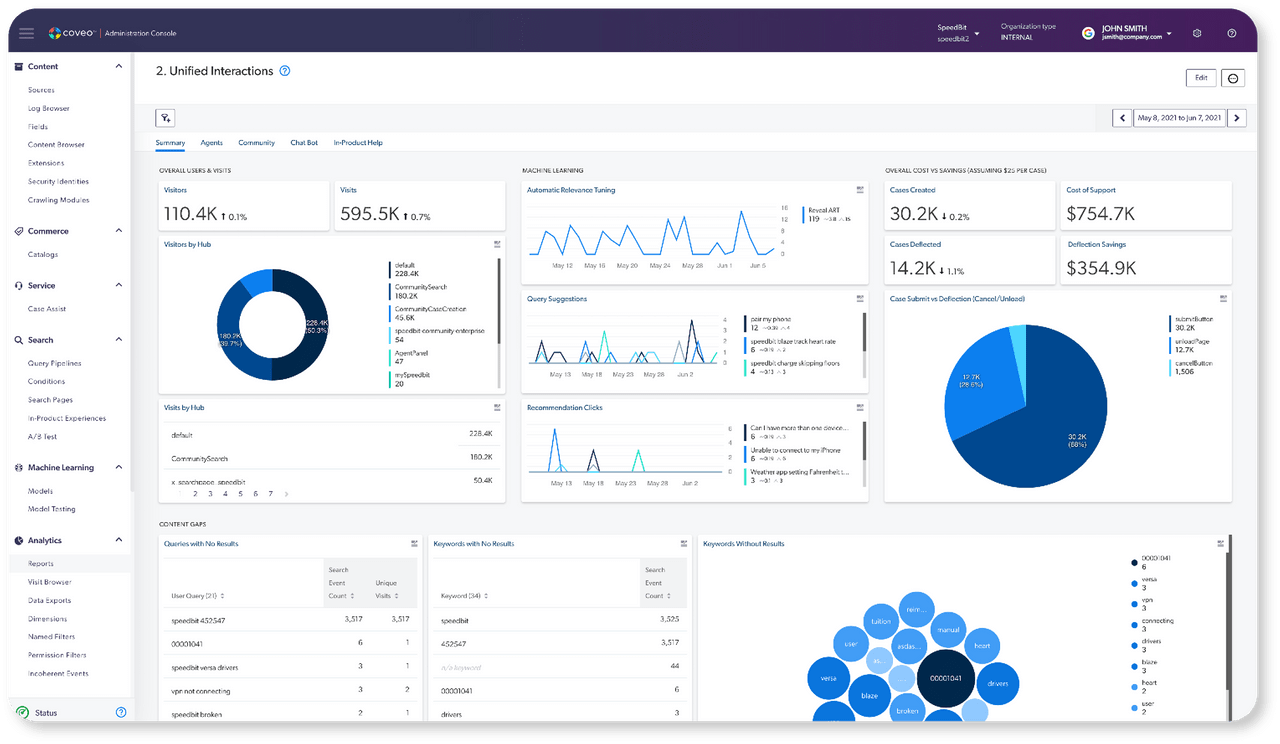Whether they focus on B2B or B2C offerings, companies have long thought of case deflections as the hallmark of providing great customer experience.
If an existing customer doesn’t lodge a complaint — or at least doesn’t open up a complicated case – it’s less work for the company, right? Not necessarily. To create brand loyalty, you want delighted customers. But how do you turn the dial up from merely satisfied customers to achieving true delight?
We spoke with John Goodman, Vice Chairman of Customer Care Measurement & Consulting (CMCC), about a better way to measure service success during our webinar, Why Search Insights are the Secret Ingredient in Service Success.
He explains how search can pull everything together to delight customers and bring better insights to your customer support teams. (And even save you big money in the long term!)
A Proper Context Of Search Matters
When you think of search, what comes to mind? Is it a simple box to type a query, driven by what customers want? Is it an extra step? Is it two or three extra steps?
Ideally, search is more than a query tool for the customer. If done well, it can provide insights into more than what people are looking for. It gives insights into customer intent, as well as the gaps companies have in content and even in product design and delivery.
It serves as a proactive tool that can turn an average customer into a delighted customer, and even prevent attrition caused by a bad customer support experience.

In any customer journey, companies aim to do the job right the first time, by meeting customer expectations. The problem is that companies define this as delivering the product according to spec, which makes sense – except for the customers who have incorrect expectations to begin with.
How does this happen? In many cases, expectations aren’t met to a customer’s satisfaction because the user simply doesn’t read the directions. Or, they may want to know more but don’t know where to look, leading them to move on. (Up to 90% of customers simply don’t look for the information they need and have a bad experience as a result.)
While you can’t always anticipate and correct issues with customer expectations, there’s a chance to recover the relationship early on with intuitive search and onboarding. If done well, it can even lead to the ultimate goal: customer delight.
Here’s how:
4 Ways Companies Can Use Search To Create “Customer Delight”
Goodman uses the word “customer delight” again and again to describe the level of customer happiness that can happen when companies proactively offer a positive experience by meeting customer needs, and going beyond the expectations the customer has.
This customer delight can happen even in situations where a customer started out confused, had a question, or needed a problem solved. In these cases, delighting them came as a result of interacting, not case deflection.
Here’s how it can look for your brand:
- Motivate people to use search. The fact remains that more than half of customers won’t bother to look for solutions to their problems, but you can lower these numbers by proactively communicating the role of search – and how your company aims to make it easier.
Putting a search bar at the top of every webpage, along with empathetic and clever language, may make a difference. Something like, “Use search to find your answer here” seems obvious, but some customers need that nudge to take action.
Remember, 90% of customers simply don’t search for information
- Embrace search within the FAQ. Support pages are a go-to destination for those looking for answers. What happens when they can’t find their answer in the most popular articles or are unsure of which category to start with?
This is where search can help. Prompt users to start with search from within the FAQ to help them target the answer they’re looking for, leading to fewer steps and less frustration.

- Go beyond search to create happy customers. There are many ways to delight your customer through and beyond the search box, including:
- Being transparent and honest in the language you use. (This may include acknowledging a product difficulty and including more targeted education in the product onboarding process.)
- Using empathy and enthusiasm. Create an emotional connection with your customers by going beyond buyer personas, and using personalization.
- Cross-selling, a method that (when done correctly) can add value to every user experience by helping them solve yet another problem.
Tip: 48% of delight experiences are done digitally. Using the right words in the email or chat will work just as well as doing it over the phone – and may work better with today’s younger consumer.
4. Measure the impact of search. Go beyond the most obvious metrics in an analytics dashboard and look for revenue implications that result from satisfied customers through more intuitive and proactive search.
Studies show that in the financial services industry alone, a single delighted customer told four people, and of those four, one to two people took action. Thirty percent of those people said they would pay more for the services of that company!

Why You Want Customers To Search
Remember, case deflection alone won’t measure customer happiness. For every five customers with unsearched questions, one will leave your customer base forever.
By making your search customer-focused, intuitive, and bypassing additional steps, you can meet your audience where they are. Better yet, boosting your teams’ training to include anticipatory new customer onboarding will answer the most-asked questions before customers ever need to use your support page.
How can you know what information to include in that onboarding? Search analytics will show you what both existing and potential customers want to know and how many times they search to find it. It will also reveal what searches are leading to case creations vs. case deflection.
This is the secret sauce. With it, you can delight customers, improve brand loyalty, and get those measurable results that ultimately improve your bottom line.
Check out the full discussion here, on demand.
Dig Deeper
What if you could make money with your call center? We teamed up with John Goodman of CMCC to create a workbook that gives you numbers-backed evidence for investing in CX technology that turns your call center from a money pit to a profit generator. Download your copy today.


